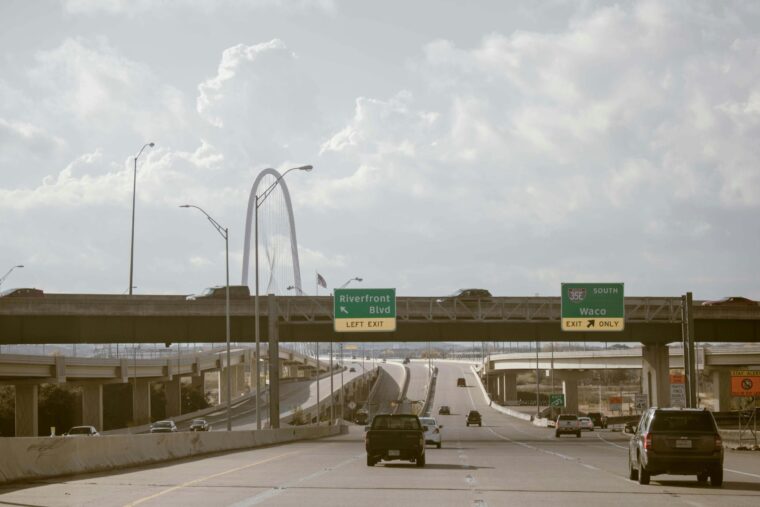
State and federal lawmakers are celebrating the third anniversary of the $1.2 trillion Bipartisan Infrastructure Law (BIL), commemorating one of the most impactful infrastructure funding initiatives in American history.
This anniversary announcement brings an additional $3.4 billion in grants through four federal grant programs designed to reinvigorate America’s infrastructure. This funding will advance hundreds of transformative projects nationwide, including rail, supply chain, port, roadway and construction materials ventures.
RELATED: Bipartisan Infrastructure Law: $400 billion for 40,000 projects
BIL funds three grant programs that will deliver nearly $2.2 billion in grants – the Federal-State Partnership for Intercity Passenger Rail Program (Fed-State), the Safe Streets and Roads for All Program (SS4A) and the Port Infrastructure Development Program (PIDP). While all three grant programs are distributed through the U.S. Department of Transportation (DOT), grants and guidance will be administered through several of the DOT’s federal transit agencies.
The Inflation Reduction Act of 2022 (IRA) will finance the fourth, the Low Carbon Transportation Materials Discretionary Grant Program, and will direct support, guidance and resource assistance to the DOT’s Federal Highway Administration (FHWA).
Passenger Rail Network along Northeast Corridor
This funding announcement’s crown jewel is the Federal Railroad Administration’s (FRA) distribution of nearly $1.5 billion in grants to 19 rail projects along the Northeast Corridor (NEC). The federal support will build upon nearly $16.4 billion in similar investments delivered to NEC in the last year.
Allocated funding under the Federal-State Partnership for Intercity Passenger Rail Program (Fed-State NEC), these grants will replace catenary structures that contribute to travel delays, enhance operational capacity and efficiency, improve signal systems and reduce the state-of-good-repair project backlog along the aging corridor.
As one of the busiest and most economically beneficial rail corridors in the nation, FRA will invest billions into modernization, repair and resiliency projects that will speed up passenger and freight locomotives while improving safety and effectiveness for riders and operators.
FRA anticipates this investment will create over 100,000 job opportunities and benefit riders and the economy on a corridor that represents 20% of the U.S. gross domestic product.
Supply Chains and Port Efficiency
Strengthening the nation’s supply chain and enhancing maritime freight efficiency, operations and safety are highlights for the DOT’s hardening efforts after the COVID-19 pandemic.
As part of this anniversary announcement, BIL will make an almost $580 million investment into America’s ports and waterways through the PIDP grant program. The DOT’s Maritime Administration (MARAD) will deliver these grants to inland river, Great Lakes and coastal seaport projects to improve maritime freight operations in 15 states and one U.S. territory.
MARAD’s PIDP grants will support port projects that advance a variety of transformative environmental and operational initiatives – including hybrid-electric vehicle conversion, port capacity expansion, terminal construction and trestle and wharf infrastructure renovations.
One port project, Port Everglades Regional Port Operations with Emission Reductions Project, will utilize a $53.3 million PIDP grant to improve port operations and upgrade equipment.. The project in Broward County, Florida will purchase hybrid and zero-emissions vehicles, create a workforce development program to support existing and future jobs and develop a plan to construct charging station infrastructure and enhance electrical systems.
Improving America’s Roadway Safety
Roadway safety for drivers, pedestrians and riders is and will remain a top funding priority for the DOT. This agenda is emphasized by an over $172 million investment to enhance road safety and innovative technology development through the SS4A program, a key feature to the department’s strategy on combating roadway hazards.
Modernizing some of America’s most dangerous roads, these SS4A grants will support over 250 local, regional and tribal communities plan and demonstrate projects that will lower deaths and serious injuries caused by vehicles.
The DOT’s investment will fund the development of roadway safety action plans and the implementation of innovative technologies that are proven to reduce crash rates and fatalities. Other SS4A-funded projects will enforce stricter laws, install bike lanes and curb extensions, enhance safety around schools and parks and utilize pilot systems to change streetlights to red for emergency vehicles and first responders.
As the DOT continues its efforts to provide more public access to multimodal transportation options and infrastructure, the grants seek to address a national roadway safety crisis, reduce roadway fatalities and support the agency’s comprehensive approach to improving public safety – the National Roadway Safety Strategy.
Domestic manufacturing of sustainable transportation materials
As part of environmental commitments in both the BIL and IRA, the Feds are leading efforts to reduce the nation’s carbon footprint and obligation to sustainable domestically-produced materials. This will include the announcement of an additional $1.2 billion in grants from FHWA’s Low Carbon Transportation Materials Grant Program.
The program, funded by the IRA, intends to promote and incentivize the usage of sustainable low-carbon construction materials in federal-funded transportation projects and federal or state procurement processes. This round of grants will provide 39 state departments of transportation funding to develop programs and processes that utilize American-made construction materials that emit less carbon emissions – such as alternative asphalt mixtures, concrete, cement and steel.
Some state transportation departments will utilize maximum program grants, up to nearly $32 million, to create a comprehensive framework that selects construction materials and tracks material usage through environmental product declarations. Others will develop programs to effectively select and purchase low-carbon materials and other related domestically-produced products and equipment.
BIL since its inception
This funding announcement will bring the BIL’s total investment in infrastructure and environmentally sustainable projects to nearly $570 billion. Funding infrastructure projects in all 50 states, D.C. and U.S. territories, BIL will fund over 66,000 state, local and tribal projects that are poised to establish federal leadership in spurring domestic transportation investments.
Some of the collective BIL projects’ accomplishments are listed below:
Almost 200,000 miles of the nation’s roadways will conduct repairs, modernization or infrastructure improvements.
Over 11,400 bridge projects that will build, repair and modernize the nation’s aging bridge infrastructure.
More than 1,600 communities in every state will improve roadway safety for drivers, passengers, multimodal transportation users and pedestrians.
Over 1,500 airports will improve runway and taxiway infrastructure, modernize terminals and develop more efficient operations.
More than 580 port and waterway projects to improve supply chain resilience and efficiency. The projects are expected to speed up the movement of goods, reduce the cost of items for consumers and lower greenhouse gas emissions.
Almost 320 rail projects will expand, repair and modernize America’s aging rail network – improve passenger and freight operations along some of the nation’s busiest locomotive corridors.
Photo by Mizzu Cho
The post Bipartisan Infrastructure Law marks third anniversary with $3.4 billion in new transportation grants appeared first on Government Market News.
